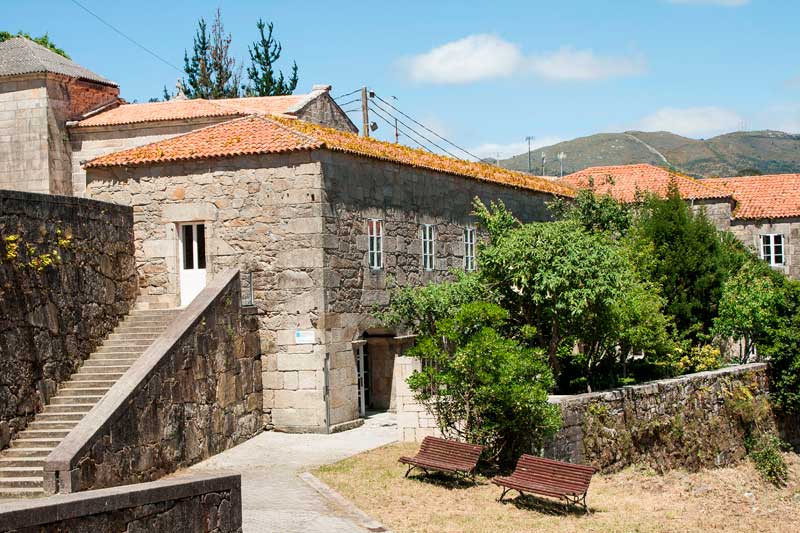
The estuary was also the entry point for pilgrims travelling to Compostela.

From the Middle Ages, the importance of Santiago de Compostela made the Bay of Muros and Noia the city’s sea entrance. The estuary was also the entry point for pilgrims travelling to Compostela. Records show that in the 12th century, naval expeditions from Britain and northern Europe destined for the Second and Third Crusades came via these shores and the tomb of the Apostle, to ask for his blessing.

By the late 14th century the arrival of pilgrims by sea was continuous, especially from England. La Coruna became the main port of access; however, the Bay of Muros and Noia also saw English devotees en route to St James’s tomb.
On occasion the seaway included expeditions chartered specifically for pilgrims, but more often than not the devotees came on vessels plying the trade routes.

From the Middle Ages, “lazaretos” were built throughout Europe: infirmaries dedicated to St Lazarus, considered the protector of lepers. For centuries, the term “lazareto” meant a sanitary facility for the quarantine of those afflicted by all kinds of contagious diseases. Along with the physical effects of leprosy, the affected suffered social stigmatisation resulting from fear of contagion.
In harbour towns like Muros these facilities were especially common, since maritime traffic was one of the ways leprosy proliferated. Around the estuary, an enclave of trade and pilgrimages to Santiago de Compostela, hospitals proliferated to care for the poor, the pilgrims and the sick.
The Lazarus Hospital in Muros probably existed in the 14th century. The first reference is from 1421, when a donation was made. Throughout the centuries donations of this kind continued, and the hospital acquired houses and properties for which tenants paid rent, which went toward the care of the sick. Rather than one large building, it consisted of several houses, used for the care of the sick when necessary, otherwise rented out.
The hospital was linked to the Sanctuary of the Virgin of the Way, a Gothic building erected by the Archbishop of Santiago after taking control of the town of Muros, probably on the site of a Romanesque hermitage. Some authors suggest that the building attached to the front of the sanctuary formed a part of it, though that seems unlikely.

The solidarity of the seafaring community includes tending to the needy. The village’s oldest records attest to this, making reference to its poor hospital. It was founded in 1418 by Diego Rodriguez de Muros, then the town judge, and functioned as a hospital all the way up to the mid- 20th century. It retains that spirit today, as a social centre. Various records demonstrate its survival through the centuries, such as donations to the hospital, mention of the properties whose profits contributed to expenses, or reports of visits to the parish made by the archdiocese’s clergymen.
A visit in 1585 left valuable information about the hospital’s operation. It indicates that it was obliged to tend to the sick, whether they were poor, pilgrims, or foreigners (remember that Muros was then a commercial port with access to the Jacobean pilgrimage route). It refers to details like the bedclothes, and notes the special treatment afforded to priests, and pilgrims “of quality”. At that time, six to nine beds were normally in use. Patients could stay until they were in a fit state to beg for alms. Naturally the hospital had to take care not to become a haven for “idlers and unsavoury characters”.
The form of the present building owes itself to a 19th-century reconstruction, of which the portico is noteworthy. The ambitious initial project had to be scaled down because of the French invasion and subsequent difficulties.